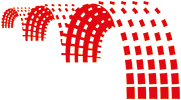Aim and scope
Bridging Humanities is an open access online peer-reviewed academic publication platform that aims to experiment with alternative forms of academic knowledge production in the digital age. The focus of the journal is on biographical-narrative research that is carried out in co-creation and integrates digital methodologies. The visual dimension is of specific importance as the online offers more options for multimedia design. Bridging Humanities encourages collaborations with artists and people working in visuals and especially welcomes visually-led submissions, whether analysed as researcher ‘found’ or researcher ‘created’ data.
The journal is not restricted to publications in the field of Humanities, but sees the use of the critical methods developed in the Humanities as important spaces for self-reflection, interpretation and explanation. These critical methods can well be applied to co-creative research processes that involves academia working on an equal basis with other knowledge producers such as artists, journalists, citizens, activists etc. Research in co-creation is a creative enterprise with human experience at its core. It implies a non-linear process, in which various knowledge sources other than cognitive knowledge (such as affective or embodied knowledge) are valued equally. A reflection on this process should form an integral part of the publication.
The journal recognises that digitalisation offers new possibilities in doing science and reaching the public, and that current changes in ICT involve a different ‘functioning’ of our brain in which we start to think and associate differently. We feel that academic publishing community must keep up with these changes. Projects should innovatively address new possibilities offered by digitalisation in doing research and communicating about it. This implies methodological developments in making use of and producing new digital data, but it can also touch upon epistemological questions (e.g. how people adopt digital technologies and which new hierarchies in knowledge sharing and production present themselves). Publications should be non-linear and visual designed web projects that are not primarily text based and that include interactive features that facilitate user experience (see for example the project Croquemort).
The biographical element must be intended in a broad sense. It should not only pertain to analyze individual life histories, but it could also fit for places (e.g. cities, forests, mines…), institutions (religious, cultural, political institutions…), groups (collective biographies: social groups, families…), or concepts (such as the development of voices of protest, see the publication Dissenting Voices). Concerning the focus on the narrative, we are interested in how stories are structured, produced and consumed, as well as how they are silenced contested and accepted.
In order to better document research processes, transparency and open data archives are a necessity. Bridging Humanities offers not only a place for storing raw material but moreover for providing insight in how the research is build up from these data and earlier publications.
Bridging Humanities does not adhere to a maximum word count for its publications. Yet, while narrative text is an effective way for communicating ideas, we promote multimedia publications and want to avoid replicating print articles or monographs on the web in the form as we know it (mainly text based pdfs).
Researchers of all levels are invited to contribute, and we especially encourage young researchers to submit their projects. For MA students and their lecturers/supervisors we offer the opportunity to publish educational projects. The editorial board can help authors/co-creators shape a co-creative process and think of the online structure and multimedia products. It is therefore advised to involve the editors from an early stage of the research process.
